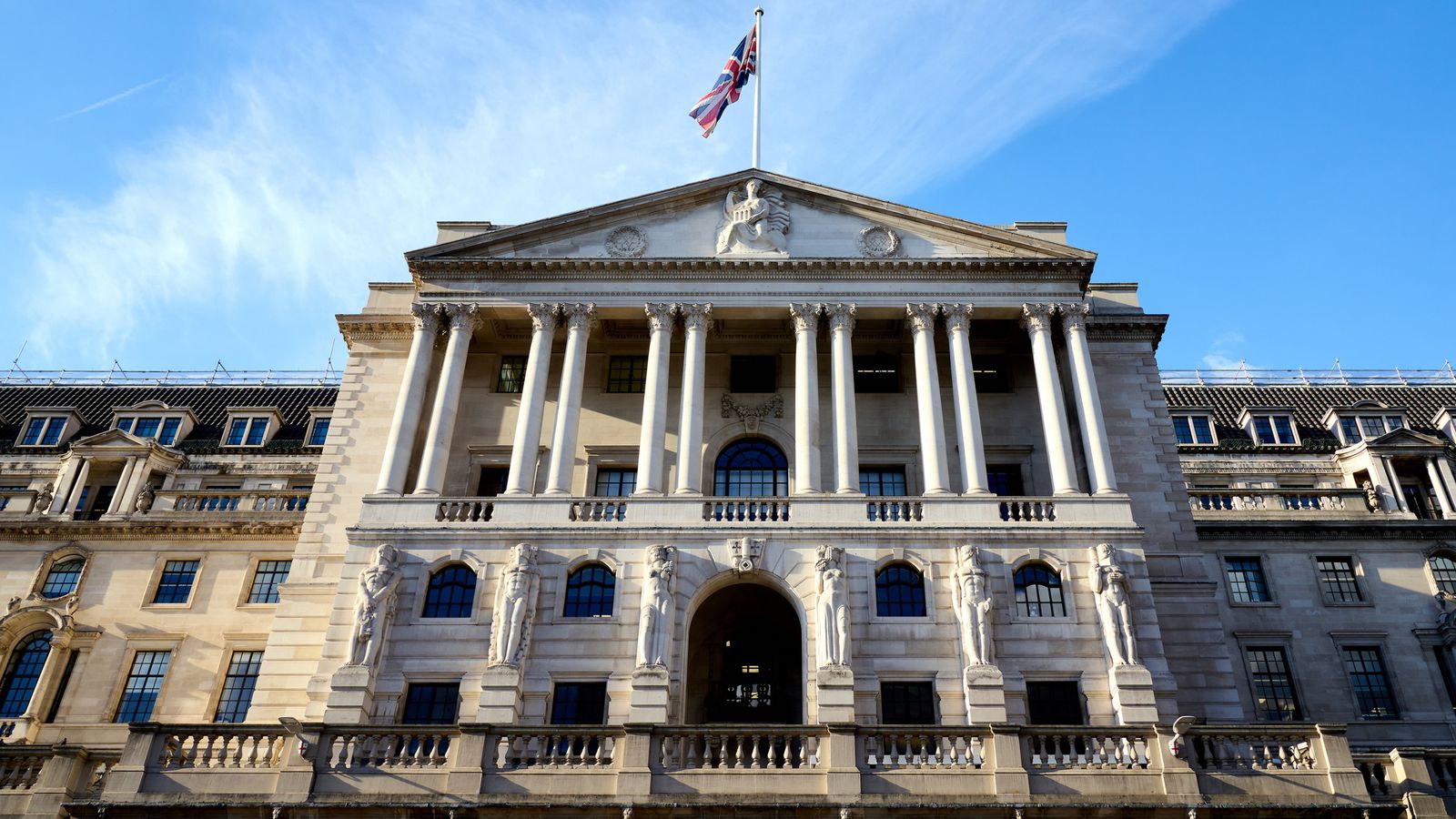It is saying something that the Bank of England has just delivered its biggest economic upgrade in the history of the Monetary Policy Committee, yet the UK is still effectively flatlining.
But that is the paradox facing the economy at the moment.
On the one hand, the outlook for the country as a whole is considerably rosier than it was only a few months ago.
If you follow these forecasts you may recall that late last year the Bank said that the UK economy might well face the longest recession in modern history.
Britons face extra £482 per month on mortgage since 2021 – latest updates
But now it has dramatically changed its outlook.
Now it believes that the economy will not shrink at all in any of the coming quarters.
A few months ago it suggested that the UK economy wouldn’t regain its pre-pandemic size for many years; now it believes it will hit that watershed at the end of this year.
Not long ago it thought the unemployment rate would rise above 6 per cent by 2025; now it thinks it will be below 4 per cent.
This is very good news.
The problem is that it’s hard to revel all that much in comparative good news when you look at the absolute numbers.
Good news needs to be put in perspective
Let’s put things into perspective.
Up until a few years ago “trend growth” was above 2 per cent. In other words, in a “normal” year you might expect the economy to grow by maybe 2-2.5 per cent.
Read more:
Bank of England interest rate increased 0.25 percentage points to 4.5%
‘Greedflation’ explored: Are businesses making inflation worse through excessive profits?
Now look at the latest Bank forecasts: growth of a quarter percentage point this year, three-quarters of a percentage point next year, and the same again in 2025.
This is very weak growth.
Now consider what’s happening beneath the surface.
Every household in the country is facing the pain of rising prices, but for some, the impact is worse than for others.
Some especially higher-income households, have considerable savings built up during the pandemic.
Many older households have already paid off their mortgages, to the extent that the proportion of homes without mortgages is higher than ever before.
Yet for those households who do not benefit from these financial cushions, life is tough – and getting tougher.
Why there is more pain to come
Only around a third of the eventual “pain” of higher interest rates has yet been felt, because most mortgage payers have yet to refix their loans onto higher rates.
But that will happen for millions in the coming months.
Moreover, one of the other key changes in the Bank’s forecasts today is that food inflation is likely to be considerably higher in the coming years than previously expected.
While food producers’ costs are beginning to come down, the prices we pay are still rising fast.
Some have characterised this as “greedflation” but economists say these companies’ margins remain compressed.
Even so, even after adjusting for the Bank’s new, less gloomy forecasts, it’s hard to envisage a return of the feelgood factor in the coming months.
The economy is not doing as badly as previously thought – this is a cause for reassurance.
But for most households, the pressures from rising living costs are still intensifying rather than abating.








